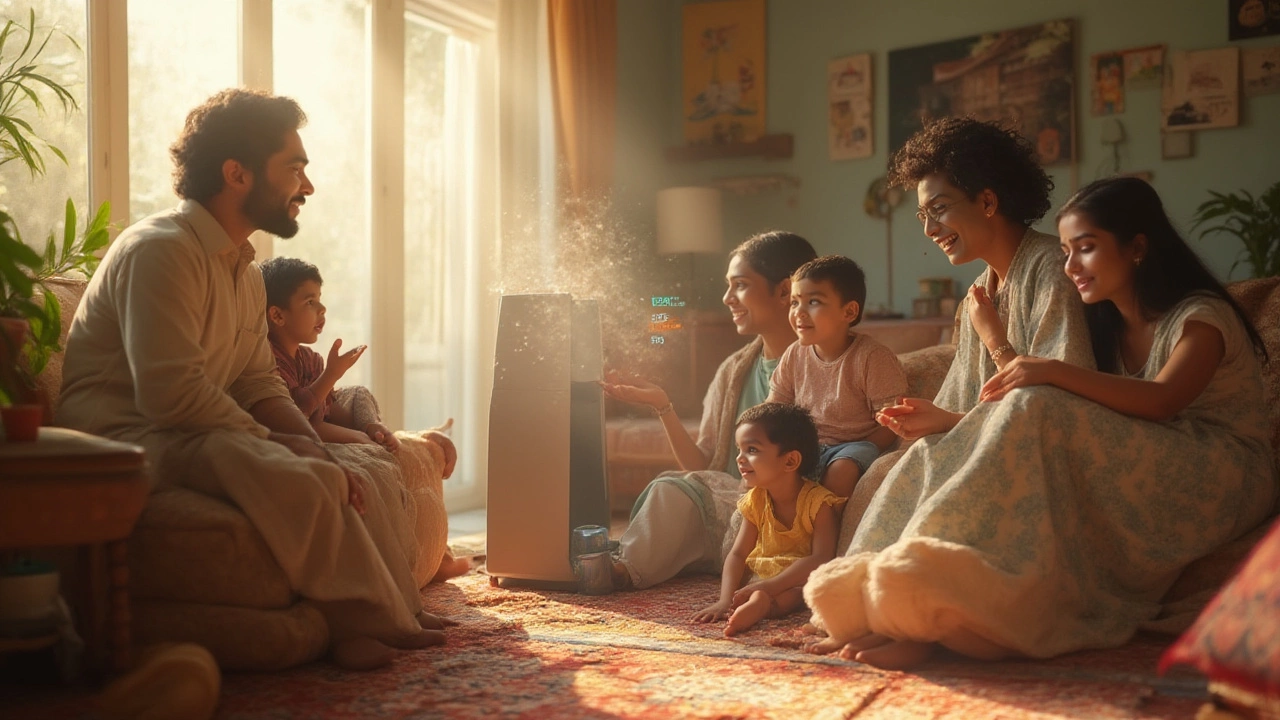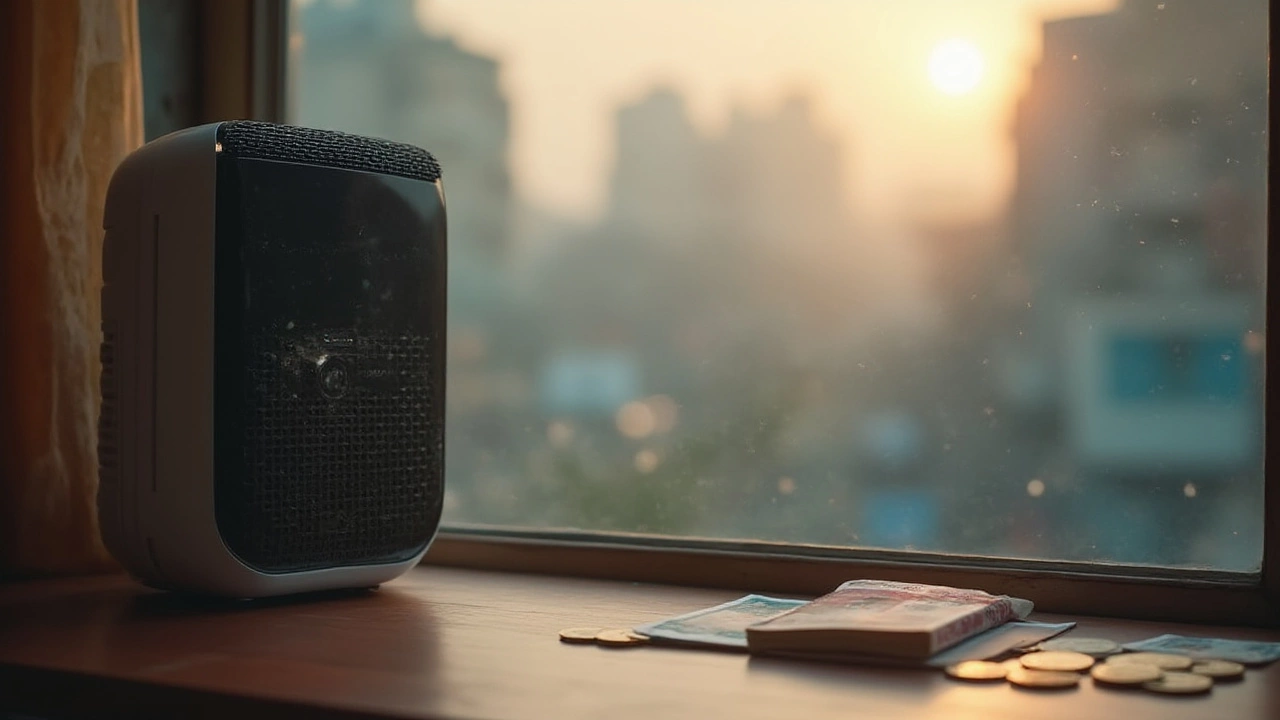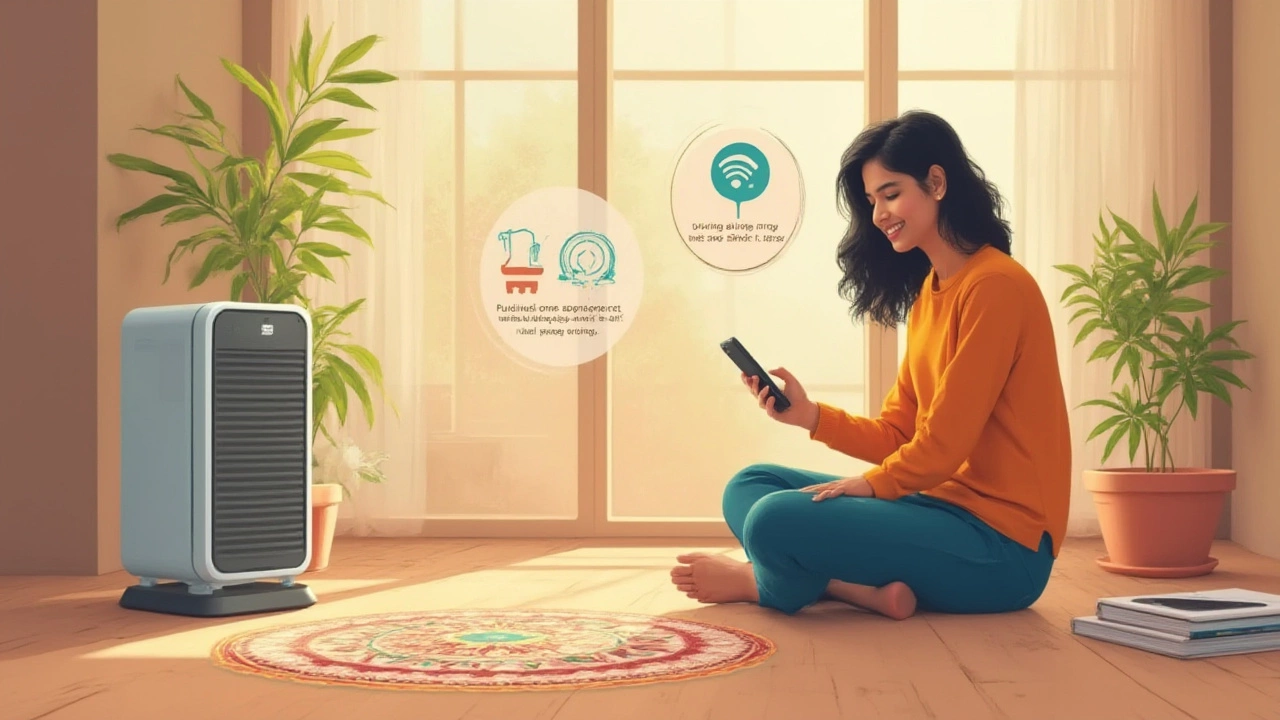
Ever walked into a room, took a breath, and thought the air felt sharp—almost as if you just stepped outside after a rainstorm? That crisp feeling probably wasn’t a fluke; it’s exactly what an air purifier is supposed to deliver. But the real debate isn’t whether these gadgets work—it’s whether you should run them all day, every day. With allergy season peaking and city pollution showing no mercy (especially if you live near Brighton’s seafront or a busy high street), people everywhere are plugging in their air purifiers hoping for cleaner lungs and better sleep. Yet, most of us are left wondering: is it OK to keep the air purifier running 24/7, or is it just a waste of energy—or, worse, might it even cause problems?
The Science of Air Purifiers: How They Actually Work
First off, let’s clear the air (pun intended) on how purifiers do their magic. At the heart of most devices is a HEPA filter—short for High-Efficiency Particulate Air. This isn’t some passing fad; HEPA filters have been proven by researchers to remove at least 99.97% of airborne particles as small as 0.3 microns. Picture a micron as one-millionth of a meter—think pollen, dust, mold spores, pet dander, and even viruses. Models with activated carbon filters go a step further, sucking up odors and nasty chemicals, which is handy if your kitchen projects keep going sideways or you’re living with a chain-smoker.
But here’s the catch: none of this works if you just switch the unit on once in a while. According to studies from Asthma UK, airborne allergen levels drop significantly—sometimes up to 70%—when a HEPA-based machine is kept running during pollen-heavy spring and summer months. Odd smells from last night’s fish dinner? An hour of air purifying might take the edge off, but continuous running makes your whole home feel fresher.
Of course, air purifiers aren’t miracle workers. They can’t remove heavy particles like settled dust or cat hair on your sofa (that’s your vacuum’s job), and they’re pretty much useless against gases unless fitted with carbon or specialty filters. The effect is cumulative—the more you run them, the more consistently they reduce nasty particles. This is why almost every manual recommends several hours’ use per day, or just keeping it on round the clock.
Should You Run Your Air Purifier 24/7?
If you ask most people, running an appliance day and night sounds wasteful. But when it comes to air purifiers, the answer is surprisingly straightforward: yes, you can—and probably should—keep yours plugged in all day, especially if you live in a city or deal with allergies or asthma. Here’s why.
Air quality inside even the cleanest-looking homes often rivals the pollution outside. Cooking fumes, dust mites, pollen sneaking in through windows, and volatile organic compounds (VOCs) released by paints, cleaning sprays, and new furniture all add up. In fact, according to the World Health Organization, indoor air can sometimes be up to five times more polluted than the air outdoors. Leaving your air purifier on maintains a steady reduction of airborne nasties, not just when you remember to turn it on.
Modern machines are actually built for it. Technologies like brushless fans, “eco” energy-saving modes, and smart sensors let purifiers work non-stop without using much power. Most top-rated HEPA air purifiers, like models from Dyson or Philips, use less than 50 watts at full speed. That’s about what an old-fashioned light bulb burns through. If your power bill is a worry, many machines have “sleep” settings that run at lower speeds, enough to filter your bedroom’s air several times each hour while barely sipping electricity—perfect for peaceful, clean-air sleep.
Take Dyson’s Pure Cool series for example. If you leave one running 24/7, it costs about £2 a week, based on 50 watts per hour and current UK energy tariffs (July 2025). That’s cheaper than most streaming subscriptions and way lower than running a tumble dryer or kettle daily.
Of course, running a purifier non-stop makes sense in places with pets, smokers, or heavy pollen—but it’s also smart in new-build flats with fresh paint, urban homes affected by local construction, or anywhere ventilation isn’t great. Your lungs might not notice the difference after an hour, but a week of clean air can mean better sleep and fewer allergy symptoms.

Common Concerns: Will My Air Purifier Wear Out or Overheat?
The idea of running a machine non-stop might seem risky. Won’t it overheat? Will the filter fill up too fast, or is it a fire hazard? All valid questions. The answer? If you bought a reputable brand and keep up with basic maintenance, you’re pretty safe.
Modern purifiers are designed like any solid home appliance—tested for thousands of hours of use. Fans in machines from recognized brands rarely break a sweat, even during marathon runs. They’re fitted with thermal protection and safety shutoffs. Still, there’s some housekeeping to remember.
The big one: filters clog with use, and when airflow drops, the machine must work harder. Ignore a dirty filter, and the performance drops off a cliff. Most purifiers have an indicator light or digital screen showing when to replace or clean the filter. Typical HEPA filters last 6–12 months, but this depends on air quality and how dirty your home or area is. If you have pets, run it in a smoker’s household, or leave windows open often, expect to swap out filters more frequently. Activated carbon filters may need replacing every 3–6 months, especially if you’re zapping odours or VOCs.
One tip: vacuum the pre-filter (the first filter layer catching larger dust) every month to keep everything running smoothly. Don’t try to wash HEPA filters—most aren’t designed for it and will degrade if you do. If you’re the forgetful type, set a recurring phone reminder. Your purifier won’t thank you, but your body will.
On the technical side, continuous use may cost a bit more in electricity, and yes, filters are an ongoing expense. Yet, for many, the benefits—fewer sick days, milder allergy flare-ups, and a fresher-smelling flat—outweigh the costs.
How Long Does It Take for an Air Purifier to Clean a Room?
Ever wondered how quickly an air purifier actually gets the job done? Most people want an instant fix, but it’s not quite magic. The time it takes to “cycle” or fully clean a room’s air depends on a few things: the power of your machine (measured in Clean Air Delivery Rate, or CADR), the room size, and how polluted things are to begin with.
The average CADR for a home-use device ranges from 100 to 350 m³/h (cubic metres per hour). If you’re working with a 20m² bedroom with average ceiling height, a decent machine will turn the air over roughly five times per hour—that means it’s scrubbing out new particles every 12 minutes or so. For larger living spaces, you might need more time or a beefier machine.
Here’s where things get clever: some purifiers have sensors to auto-detect pollution spikes from cooking, pets, or smoking, and ramp up the fan automatically. Still, the reality is this—the air indoors is never completely “clean.” Windows, doors, and human activity mean new pollutants are always sneaking back in. That’s why continuous running works best for lasting results.
Compare it to a fridge: you wouldn’t turn it off every night and risk your food spoiling, right? That’s pretty much how air purifiers work. Consistency wins.
| Room Size | Average CADR Needed | Full Air Cycle Time |
|---|---|---|
| Small bedroom (10m²) | 100 m³/h | ~12 minutes |
| Medium living room (20m²) | 150 m³/h | ~15 minutes |
| Large open space (40m²) | 300 m³/h | ~16 minutes |

Extra Tips to Get the Most From Your Air Purifier
So, you’ve decided keeping the purifier on makes sense for healthier air. But how do you squeeze every last bit of value from it? Here’s how to make your machine work smarter, not harder:
- Place it away from walls and obstructions, ideally near a major air pathway (like a door or window) for best circulation.
- Keep windows and doors closed when the purifier is on during high pollen or pollution days. You want it cleaning the indoor air, not battling endless outdoor grime.
- Don’t stick it in a corner, behind curtains, or under tables—the airflow will suffer, and so will your air quality.
- Set your purifier to auto mode if available. It’ll adjust the speed and energy use based on air quality readings.
- Be religious about filter changes. Mark your calendar or use the app reminders if your machine has smart features.
- Run it on ‘high’ when cooking, cleaning, or after guests leave. For everyday use, ‘medium’ or ‘auto’ is fine.
- If you live by a busy road, consider a purifier with strong carbon filtering to catch car fumes and VOCs from outside.
- During hay fever seasons, start the purifier a few weeks before pollen counts spike. Don’t wait until you’re already sneezing.
- Pair your purifier with a humidifier if your home’s air gets super dry—just make sure to keep the machines a few feet apart so they don’t trip each other’s sensors.
Running your purifier all day doesn’t mean you should ignore cleaning. Regular vacuuming and dusting are still important. And, if you’re looking to save on energy, try plugging your machine into a smart plug—set a schedule or turn it off remotely if you forget.
The run air purifier all day debate is mostly settled by science, habit, and comfort. Use your nose and your energy bill as guides. If your home is smelling fresh, your allergies are in check, and your machine isn’t screaming for a filter change twice a month, you’re probably doing it right. Fresh air shouldn’t be a luxury—it should be the default, especially if you’re stuck inside during another classic British rainy day.